Over the past few years, Deep Water Culture (DWC) has gained popularity among home growers for its simplicity and effectiveness. As they initiate on their journey to cultivate plants hydroponically, it is crucial that they have a comprehensive checklist to ensure they acquire all necessary components for a successful DWC setup. This guide will equip them with the vital tools and equipment needed to foster a healthy growing environment, promote robust plant development, and maximize yields. With the right preparation, they can confidently investigate the rewarding world of hydroponics.
Key Takeaways:
- Ensure you have the necessary equipment, including a reservoir, net pots, and a growing medium suitable for Deep Water Culture.
- Select an appropriate water pump and air pump to maintain oxygen levels and circulate nutrients in the system.
- Use a quality nutrient solution specifically formulated for hydroponic systems to promote healthy plant growth.
- Maintain the ideal water temperature and pH levels for optimal nutrient absorption and plant health.
- Familiarize yourself with basic plant care techniques, such as pruning and pest management, to ensure successful growth.
Choosing the Right DWC System for Your Needs
Evaluating Space and Environment
Assessing the available space for a DWC system plays a pivotal role in determining the right setup. Factors such as ceiling height, floor space, and proximity to electrical outlets can significantly influence the size and type of system one can effectively use. If a grower is limited on space, a compact vertical DWC system may be more appropriate, allowing them to maximize the yield per square foot without compromising plant health.
Additionally, the environment within the growing area demands consideration. Heat and humidity levels are vital, as a well-ventilated area will promote healthy root development and reduce the risk of mold. Having adequate lighting is also necessary for plant growth. With the right measures in place, such as exhaust fans or air conditioning units, growers can tailor their DWC systems to thrive in both warm and cooler climates.
Comparing Popular DWC Systems
Selecting among the various DWC systems on the market requires a careful comparison of features, benefits, and pricing. Growers can choose between DIY setups, which offer flexibility and cost-effectiveness, or pre-made systems that often come with manufacturers’ warranties. Growers should also consider the size of the reservoir in relation to the number of plants they wish to cultivate, as larger reservoirs can provide a more stable environment for the roots, leading to healthier plants and higher yields. The choice between single or multi-site systems should also hinge on how much space one has, as well as their personal growing goals.
| System Type | Key Features |
|---|---|
| DIY DWC | Customizable, cost-effective, requires more time to set up. |
| Hydroponic Bucket System | Compact, suitable for limited space, easy to manage. |
| Multi-Site DWC System | Allows for higher plant counts, ideal for larger grow operations. |
| Commercial DWC System | Optimized for high yield, integrated systems for ease of use. |
For example, a Hydroponic Bucket System can offer a solid choice for those in limited spaces, as its design typically allows for more efficient light distribution and air circulation. On the other hand, a larger Commercial DWC System is equipped with features specifically focusing on maximizing yield in sizable operations, making it ideal for serious growers as they scale up their production efforts. The distinct advantages of each system can help growers navigate their unique growing environments effectively.
Essential Components for Your DWC Setup
Reservoir Options: Size and Material Considerations
Choosing the right reservoir is vital for a successful deep water culture (DWC) system. For beginners, it’s advisable to select a reservoir that can hold at least 5-10 gallons of nutrient solution for a single plant. Larger systems may require 15-20 gallons or more, depending on the number of plants being cultivated. A suitable size allows for ample nutrient circulation and helps maintain stable pH and temperature levels. Common materials like plastic are lightweight, affordable, and readily available, while food-grade resin containers are recommended to prevent leaching harmful chemicals that could affect plant growth.
An opaque reservoir is preferred to inhibit algae growth, which can disrupt nutrient absorption. She should also consider incorporating a lid to minimize evaporation and stabilize the nutrient solution. If she’s planning to grow more demanding plants, opting for a larger reservoir can minimize the frequency of nutrient adjustments and ensure that her plants remain healthy and thriving throughout their growing cycle.
Net Pots and Growing Medium: Finding the Perfect Match
Net pots serve as the support structure for the plants, allowing roots to hang directly in the nutrient solution while also providing adequate aeration. Sizes typically range from 3 to 6 inches in diameter, depending on the plant species. They should also align with chosen growing mediums, which play a significant role in moisture retention and aeration. Expanded clay pellets or hydroton is popular choices due to their lightweight nature and excellent drainage capabilities, making them ideal for anchoring roots in a DWC setup.
Combining hydroton with a small layer of rock wool or coconut coir can encourage healthy root development while maintaining moisture. She should ensure that the chosen medium fits snugly within the net pot, preventing any loss of support while still allowing roots to access nutrients and oxygen directly from the reservoir. The synergy between net pots and growing mediums can significantly influence overall plant health and growth rates.
Air Pump and Air Stones: Ensuring Adequate Oxygenation
A reliable air pump is vital, providing oxygen to the nutrient solution, which ensures healthy root development. Look for pumps with a flow rate of at least 1 liter per minute per air stone used. Air stones contribute to the distribution of oxygen throughout the reservoir, preventing stagnation and promoting an oxygen-rich environment that is vital for plant health. The size and number of air stones utilized should directly correspond with the size of the reservoir. Multiple air stones strategically placed can maximize oxygenation and enhance nutrient uptake.
To ensure optimal efficiency, using high-quality air stones made from materials like porous ceramics can greatly improve performance. They create fine bubbles that dissolve quickly in the water, making more oxygen available for plant roots. This aspect of a DWC system can greatly impact plant growth, so selecting high-performing air pumps and stones is a decision that should not be overlooked.
Nutrient Solutions: The Key to Thriving Plants
Understanding Hydroponic Nutrients
Hydroponic nutrients form the backbone of any successful DWC (Deep Water Culture) system. These nutrients are specifically formulated to support plant growth in a soilless environment, providing all the micro and macronutrients necessary for flourishing plants. In a hydroponic setup, nutrients are typically divided into three primary categories: carbohydrates, macronutrients, and micronutrients. Macronutrients, which include Nitrogen (N), Phosphorus (P), and Potassium (K), are vital for plant structure and energy. Micronutrients like Iron (Fe), Zinc (Zn), and Manganese (Mn) play vital roles in smaller quantities but are no less important for metabolic processes.
Understanding the role of each nutrient helps growers tailor their solutions to the specific needs of the plants they are cultivating. For example, lettuce may thrive with a higher concentration of nitrogen, promoting lush, green foliage, while fruiting plants such as tomatoes often require more phosphorus to support flowering and fruit development. This tailored approach is necessary since different plants have varying nutrient requirements, and effectively managing these differences can maximize yield and improve flavor profiles.
Mixing Your Nutrients: Ratios and Techniques
Mixing nutrient solutions might seem overwhelming initially, but once growers grasp the necessary ratios and techniques, it becomes a straightforward process. Most hydroponic nutrient systems provide specific mixing guidelines—often measured in parts per million (PPM) or EC (Electrical Conductivity)—for different stages of plant growth. For instance, a starter nutrient solution may require a 3:1:2 ratio of NPK for seedlings, while flowering plants might need an adjusted 1:2:2 ratio to support additional phosphorus and potassium.
One effective technique for mixing nutrient solutions involves using a calibrated measuring cup to ensure accuracy based on the solution’s volume requirements. Committing to a routine could involve checking the nutrient ratios weekly as plants progress through their growth cycles. This practice supports consistent results and keeps plants from experiencing nutrient deficiencies or excesses. Checking pH levels is another vital step; maintaining a pH between 5.5 and 6.5 ensures optimal nutrient uptake for hydroponically grown plants. This meticulous approach to nutrient mixing can significantly enhance plant health and output.
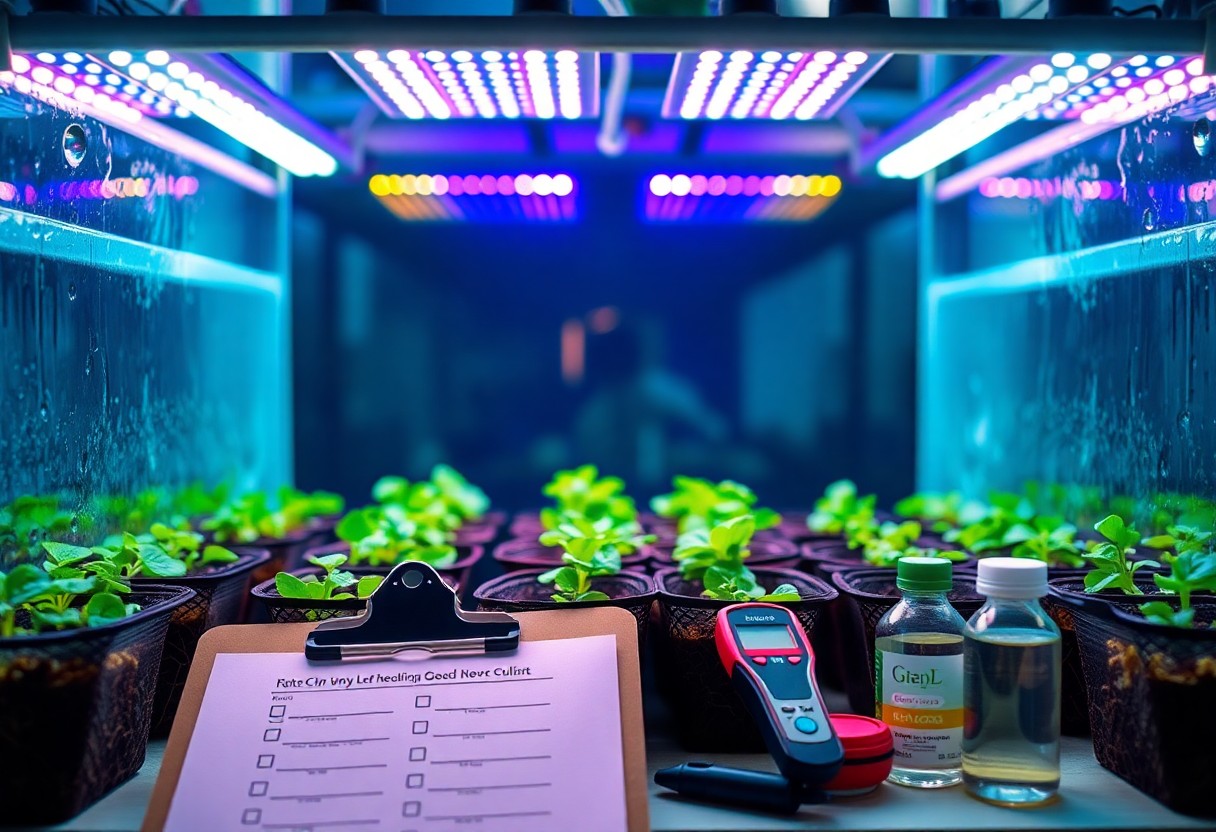
Lighting Techniques for Optimal Growth
Different Types of Grow Lights: Pros and Cons
Choosing the right grow light can significantly affect the growth and yield of plants in a DWC system. Various types of lights offer distinct advantages and disadvantages. For beginners, understanding the differences is paramount for selecting the right one for their setup.
Pros and Cons| Type of Grow Light | Pros and Cons |
|---|---|
| LED | Pros: Energy-efficient, long lifespan, low heat output. Cons: Higher initial cost, may require specific spectrums for optimal results. |
| Fluorescent | Pros: Affordable, easy to find, good for small spaces. Cons: Less powerful, shorter lifespan compared to other options. |
| HID (High-Intensity Discharge) | Pros: High light output, great for flowering stages. Cons: Generates significant heat, requires additional cooling solutions. |
| Incandescent | Pros: Very inexpensive, easy to use. Cons: Inefficient, high heat output, not ideal for plant growth. |
| CFL (Compact Fluorescent Lamp) | Pros: Compact design, lower energy consumption. Cons: Limited range, less effective for large plants. |
Light Placement and Scheduling: Maximizing Photosynthesis
Proper light placement involves positioning the lights at an optimal distance from the plants to ensure even light distribution and prevent light burn. Ideally, LED lights should hang 12-24 inches above the canopy, while HID lights might require a distance of 24-36 inches. Adjusting the height as plants grow helps maintain adequate light intensity and prevents stress.
Scheduling light exposure also plays a critical role in the growth cycle. A common practice is to provide plants with 18-24 hours of light during the vegetative stage and reduce it to 12 hours during flowering. The timing of the light cycles mimics natural sunlight patterns and encourages robust growth stages. For instance, growers frequently implement a light schedule that aligns with the natural diurnal cycle to enhance photosynthesis efficiency while promoting a healthier plant environment.
Temperature and pH Control: Balancing the Environment
| Aspect | Details |
|---|---|
| Ideal Temperature Range | 68°F to 72°F (20°C to 22°C) for most plants. |
| Impact of Temperature | Higher temperatures can lead to lower dissolved oxygen levels in water, stressing plants. |
| Recommended pH Range | 5.5 to 6.5 for optimal nutrient uptake. |
| Negative Effects of pH Imbalance | pH levels above 7 or below 5 may lock out imperative nutrients. |
Monitoring and Adjusting Water Temperature
Water temperature impacts nutrient absorption and plant health significantly. Heaters or chillers may be imperative depending on the climate and environmental setup. For many growers, using a simple thermometer can provide insight into the current temperature of the solution. He or she can then use inline heaters or water chillers to make necessary adjustments based on the thermometer readings.
Some growers implement a monitoring system connected to temperature sensors that can alert them when the water temperature strays from the desired range. Regular observation minimizes abrupt changes that could stress plants, ensuring they receive a consistent environment that promotes healthy growth.
| Monitoring Method | Tools Needed |
|---|---|
| Digital Thermometer | Standard or waterproof models. |
| Heater | Submersible or inline options. |
| Chiller | Inline water chillers for temperature reduction. |
The Importance of pH Levels and How to Maintain Them
Focusing on pH levels unveils their role in nutrient accessibility for plants. A balanced pH ensures that the nutrients dissolved in the water are available for absorption by roots. When pH dips below 5.5, an excess of hydrogen ions may render imperative nutrients like phosphorus unavailable; conversely, if it exceeds 6.5, certain nutrients might become inaccessible as well. Maintaining pH in the right range facilitates optimal growth conditions and robust plant development.
Adjustments to pH can be made using pH up or pH down solutions, allowing growers flexibility in maintaining their hydroponic system. Regular testing is imperative; many growers utilize pH test kits or electronic meters for continuous tracking. Through consistent monitoring, they can easily make informed adjustments to keep pH levels steady, fostering a thriving environment for their plants.
Using a reliable pH meter coupled with appropriate adjustment solutions can revolutionize a grower’s success. Those who integrate this practice will often notice remarkable improvements, such as enhanced growth rates and reduced nutrient problems. For exceptional results, growers may want to recalibrate their meters weekly to ensure accurate readings.
Preventing Common Issues in DWC Systems
Recognizing Signs of Nutrient Deficiencies
In a DWC system, identifying nutrient deficiencies early on can save growers from long-term crop damage. A plant exhibiting yellowing leaves, particularly from the tips inward, may indicate a nitrogen deficiency. Conversely, a plant with dark green leaves that are stunted in growth could be suffering from an excess of nitrogen, which can disrupt the absorption of other necessary nutrients. Deficiencies in micronutrients can manifest through symptoms such as leaf curling or the appearance of brown spots. Regular inspection of plants is fundamental for catching these issues before they progress.
Monitoring the nutrient solution’s electrical conductivity (EC) can also help in determining the availability of nutrients in the water. A higher EC reading often correlates to a higher nutrient concentration. For instance, if a grower notices poor plant growth and the EC levels are significantly lower than recommended, it is a sign that the nutrient levels need adjustment. Awareness of the specific nutrient needs of various plants allows for timely corrective actions.
Pest and Disease Management Strategies
DWC systems, often sheltered from outdoor pests, can still face threats from pests and diseases, particularly if there are any openings or contamination points. Issues like aphids, spider mites, and root rot can be detrimental to plant health and yield. Implementing routine inspections for physical signs of pests, such as webbing or chewing marks on leaves, provides an opportunity to intervene early. Employing beneficial insects or natural pesticides, such as neem oil, can help manage infestations without introducing harmful chemicals into the hydroponic system.
Another layer of defense includes maintaining a clean environment. Regularly cleaning the reservoir, pots, and any tools helps eliminate pathogens that could lead to diseases like damping-off or fungal infections. A well-structured rotation of crops can minimize the risk of pathogens specific to certain plants. Growers might also consider utilizing resistant plant varieties as a proactive approach in preventing disease establishment.
In addition to regular maintenance, introducing organic matter into the growing environment can bolster the plants’ resistance to pests and diseases. Utilizing compost teas or microbial inoculants not only enriches the nutrient profile of the hydroponic solution but also enhances the plants’ immune responses. Ensuring the entire system functions harmoniously, including air circulation and water quality, will mitigate the risks associated with pests and diseases in DWC setups, allowing growers to focus on nurturing healthier plants.
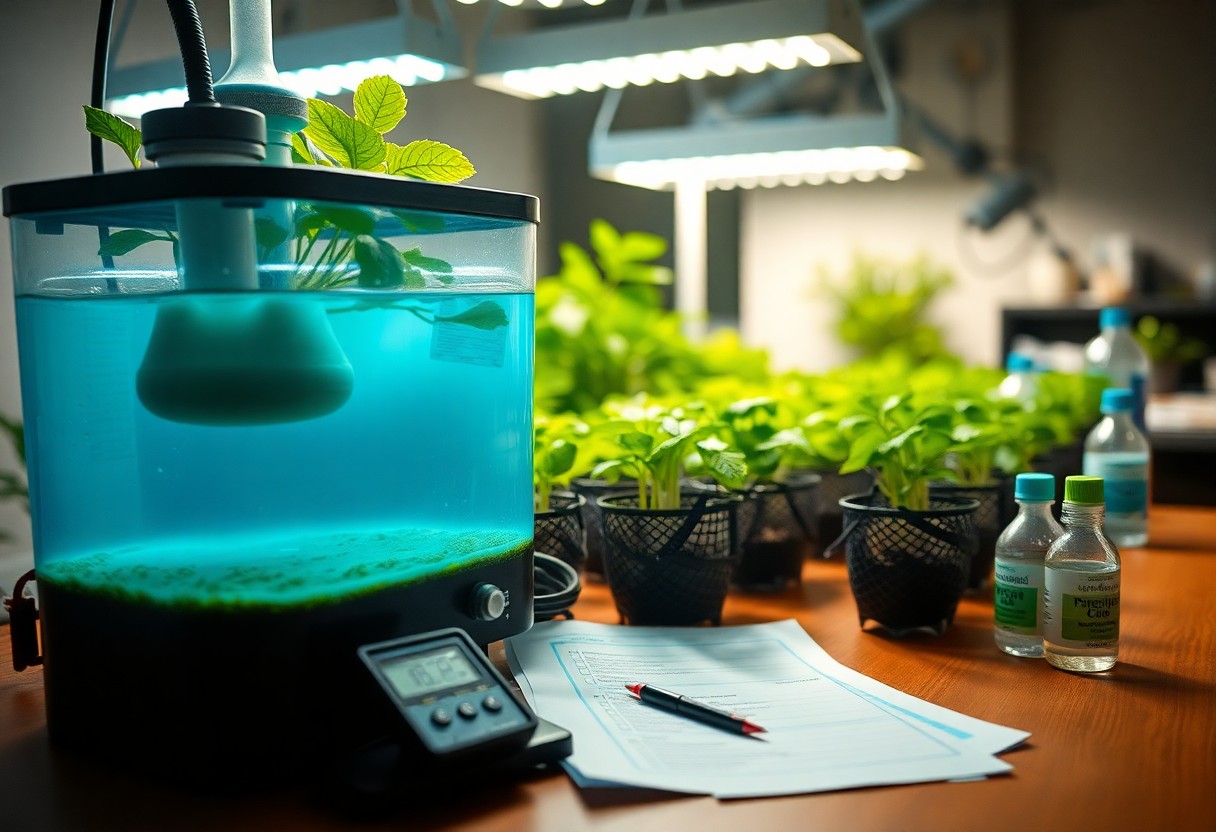
Maintenance and Troubleshooting Tips for Long-Term Success
Routine Checks and System Maintenance
Establishing a structured routine for checks and maintenance greatly enhances the chances of success in a DWC setup. She should inspect the water levels in the reservoirs regularly, ensuring they don’t drop below recommended levels. Keeping an eye on water temperatures is vital, with a range of 68°F to 72°F generally being ideal for optimal nutrient uptake. With temperature fluctuations, they may find that plant growth can be stunted, leading to poor yields. Nutrient solution concentration can change rapidly, especially in a DWC system due to rapid plant growth. Using a TDS meter (Total Dissolved Solids) can provide they with precise readings of nutrient solution strength. If readings are too low, they can add nutrients; if too high, they may need to dilute the solution with fresh water. Regularly testing the pH level is equally vital, with a target range of 5.5 to 6.5 commonly preferred. This will help in keeping plants healthy and thriving.Quick Fixes for Common DWC Problems
Addressing common issues swiftly can prevent minor problems from escalating into major setbacks. For instance, if discoloration of leaves occurs, particularly yellowing, it could signal a nutrient deficiency or an unsuitable pH level. A quick check of both the nutrient solution’s strength and pH can facilitate immediate corrective actions. If she notices that her plants are wilting, assessing the water and nutrient levels immediately can reveal if the roots are receiving enough oxygen or if there’s an obstruction. Another common issue is algae growth in the nutrient reservoir. This can lead to competition for nutrients and oxygen, ultimately harming plant development. They can use black plastic or other opaque materials for covering reservoirs to block light, thus *minimizing* algae formation. Regular cleaning of the system not only helps in eliminating existing algae but also prevents the establishment of new colonies. After identifying a problem, employing rapid troubleshooting techniques can make all the difference in ensuring a healthy growth cycle within the DWC setup. Monitoring plants and taking immediate action not only leads to healthier plants but can also foster a more productive growing environment.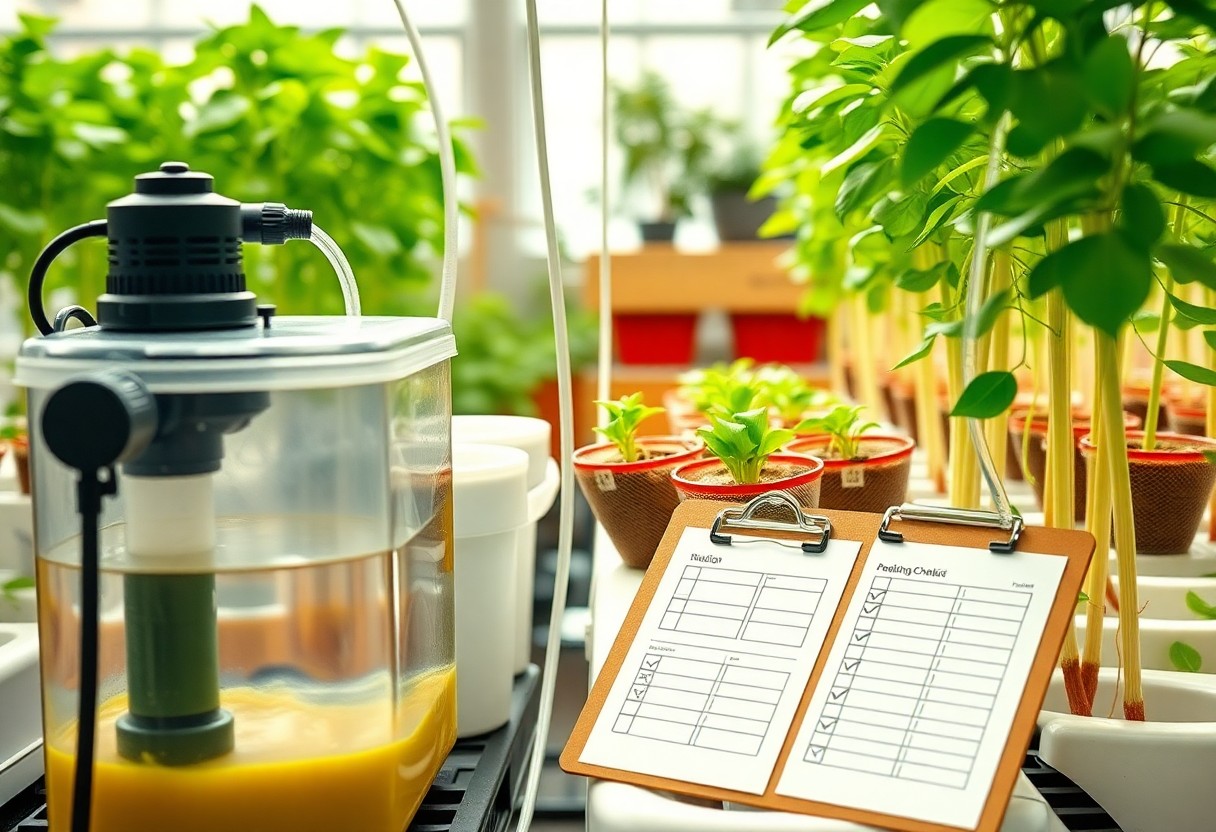
Transitioning from Beginner to Pro: Best Practices
Experimenting with Different Crops
To enhance their horticultural skills, growers should consider experimenting with various crops beyond the typical selections. Different plants thrive under diverse conditions, so he or she may discover that specific lettuce varieties or herbs outperform others in DWC systems. Factors such as nutrient uptake rates, growth cycles, and lighting preferences can provide valuable insights into crop selection, leading to a more fruitful growing experience.
Additionally, exploring the growth requirements of fruiting plants could be an exciting venture. For instance, they might try tomatoes or peppers which require specific humidity levels but yield a bountiful harvest. By observing and documenting the growth patterns of different crops, he or she can fine-tune their techniques and improve overall yields.
Scaling Up Your DWC Setup: Advanced Techniques
As confidence grows, expanding the DWC setup becomes a logical step. Advanced techniques offered by hydroponics can significantly increase production. Integration of automated systems like pH controllers, nutrient monitoring equipment, and environmental sensors enhances precision and reduces human error. These innovations allow for better control over the growing environment, leading to healthier plants and higher yields.
They might also consider utilizing larger reservoirs and more complex systems, such as multi-site DWC setups that can accommodate a greater variety of plants simultaneously. This scaling requires attention to details like distribution methods and expanding lighting capacity, ensuring each plant receives adequate support for optimal growth.
| Advanced Techniques | Description |
|---|---|
| Automation | Utilizing nutrient monitors and pH controllers to maintain optimal growth conditions effortlessly. |
| Multi-Site DWC Configurations | Implementing systems that enable growing multiple types of plants concurrently for increased biodiversity. |
| Energy Management | Using energy-efficient LEDs and strategic lighting schedules to reduce costs while maximizing growth. |
| Timers | Setting timers for lights and nutrient feedings to create a consistent growing routine, reducing labor. |
| Temperature Control | Incorporating heating mats or chillers to regulate water temperature for specific plant needs. |
Scaling further may involve seeking out quality genetics or hybrid strains that adapt well to hydroponic environments, potentially leading to higher yields and faster growth. Emphasizing knowledge-sharing through forums and online communities will broaden one’s understanding of advanced techniques while connecting with fellow growers who share similar aspirations. Such relationships can provide valuable insights into the best practices seen in professional DWC setups around the world.
- Research additional crops suited for hydroponics.
- Document growth cycles and environmental conditions.
- Invest in automated technology for precise nutrient management.
- Experiment with multi-site setups for improved variety.
- Engage with expert growers for knowledge exchange.
Final Words
Conclusively, initiateing on a Deep Water Culture (DWC) gardening journey requires a thoughtful approach and careful preparation. By following this beginner’s DWC setup checklist, she ensures that she has all the vital components in place, from a reliable reservoir to quality nutrient solutions. He should prioritize optimal conditions for plant growth, including proper lighting, aeration, and temperature control, which collectively contribute to a thriving hydroponic environment. With the right tools and knowledge, they can cultivate healthy plants and achieve successful yields.
As they navigate the initial phase of hydroponic cultivation, it is important to stay informed and continuously learn about plant care and system maintenance. She may find that troubleshooting and making adjustments along the way is part of the growth process. They should embrace the journey, knowing that each step adds to their gardening capability and expertise. With dedication and the help of this checklist, anyone can confidently start their DWC adventure and enjoy the benefits of growing their own plants.
FAQ
Q: What is Deep Water Culture (DWC)?
A: Deep Water Culture (DWC) is a hydroponic growing method that allows plants to grow with their roots submerged in a nutrient-rich water solution. This system provides a high level of oxygen to the plant roots, promoting rapid growth and healthier plants. In a DWC setup, air pumps and stones are used to ensure that the water is well-oxygenated.
Q: What equipment do I need for my DWC setup?
A: A basic DWC setup requires several key components: a reservoir (to hold the nutrient solution), net pots (to hold the plants), a growing medium (like clay pellets or rock wool), an air pump (to oxygenate the water), an air stone, a water heater (optional), a pH meter, and nutrient solutions specific for hydroponic systems. You may also want to consider a light source if growing indoors.
Q: How do I set up my DWC system step by step?
A: Setting up your DWC system involves several steps: 1) Prepare the reservoir by cleaning it thoroughly; 2) Drill holes in the lid for the net pots; 3) Fill the net pots with your chosen growing medium and plant the seedlings or seeds; 4) Place the net pots into the holes; 5) Fill the reservoir with water and mix in the nutrients according to manufacturer instructions; 6) Connect the air pump and stone to ensure water is well-aerated; 7) Position grow lights if needed, ensuring they are at the correct height for optimal plant growth.
Q: How do I maintain water quality in a DWC setup?
A: Maintaining water quality in a DWC setup involves several steps: 1) Regularly monitor pH levels and adjust them as necessary; optimal levels typically range between 5.5 to 6.5; 2) Change the nutrient solution every two to three weeks to prevent buildup of salts and minerals; 3) Keep an eye on water temperature, ideally between 65°F to 75°F; 4) Ensure good aeration to prevent stagnation; 5) Check for any signs of algae growth or pathogens and take the necessary actions if detected.
Q: How often should I check on my plants in a DWC system?
A: It is ideal to check on your plants at least once a day. Look for signs of nutrient deficiency, root health, and water levels in the reservoir. Regular visual inspection allows you to address any issues promptly, ensuring the plants remain healthy and thriving.
Q: What types of plants are best suited for DWC?
A: DWC can be used to grow a variety of plants, but leafy greens, such as lettuce, kale, and spinach, as well as herbs like basil and mint, tend to perform exceptionally well. Fruit-bearing plants, such as tomatoes and peppers, can also thrive in DWC systems but may require more space and support structures as they grow.
Q: How can I prevent odor problems in a DWC setup?
A: Odor issues in a DWC setup can arise from decomposing roots or stagnant water. To mitigate odors, ensure proper aeration of the water, replace nutrient solutions periodically, and keep the reservoir clean. Adding beneficial bacteria or enzymes can help in breaking down organic matter, minimizing smells. Additionally, ensuring that your growing space is well-ventilated can aid in dissipating any potential odors.


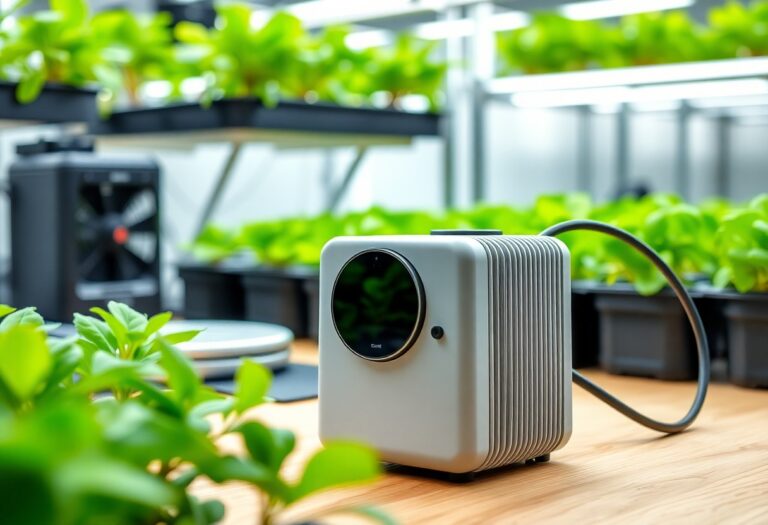


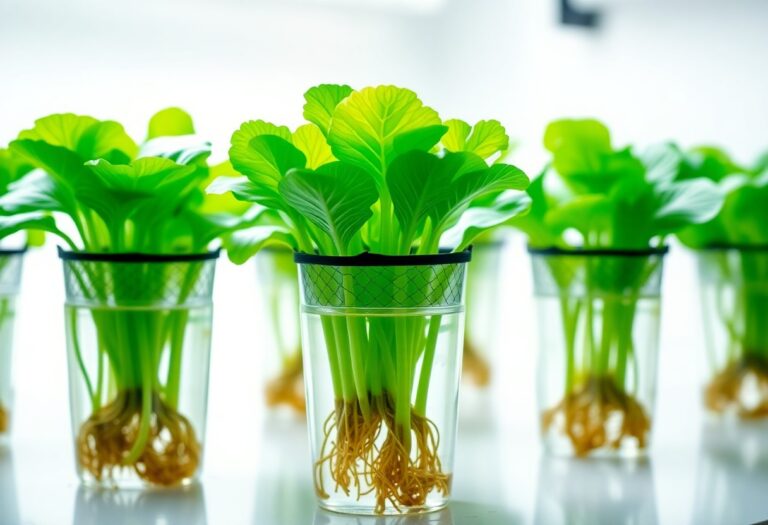
Leave a Comment